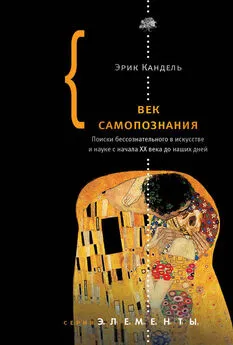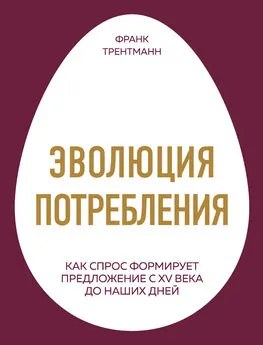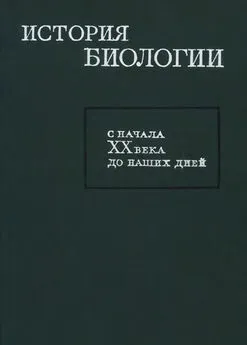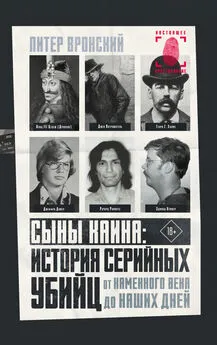Эрик Кандель - Век самопознания. Поиски бессознательного в искусстве и науке с начала XX века до наших дней
- Название:Век самопознания. Поиски бессознательного в искусстве и науке с начала XX века до наших дней
- Автор:
- Жанр:
- Издательство:Литагент Corpus
- Год:2016
- Город:Москва
- ISBN:978-5-17-085501-8
- Рейтинг:
- Избранное:Добавить в избранное
-
Отзывы:
-
Ваша оценка:
Эрик Кандель - Век самопознания. Поиски бессознательного в искусстве и науке с начала XX века до наших дней краткое содержание
Век самопознания. Поиски бессознательного в искусстве и науке с начала XX века до наших дней - читать онлайн бесплатно полную версию (весь текст целиком)
Интервал:
Закладка:
Andreasen, N. C. The Creating Brain: The Neuroscience of Genius. New York: Dana Press, 2005.
Bever, T. G., and R. J. Chiarello Cerebral dominance in musicians and nonmusicians // Science 185 (4150) 1974: 537–539.
Bowden, E. M., and M. J. Beeman Getting the right idea: Semantic activation in the right hemisphere may help solve insight problems // Psychological Science 9 (6) 1998: 435–440.
Bowden, E. M., and M. Jung-Beeman Aha! Insight experience correlates with solution activation in the right hemisphere // Psychonomic Bulletin and Review 10 (3) 2003: 730–737.
Bowden, E. M., Jung-Beeman, M., Fleck, J., and J. Kounios New approaches to demystifying insight // Trends in Cognitive Sciences 9 (7) 2005: 322–328.
Bower, B. Mood swings and creativity: New clues // Science News, October 24, 1987.
Damasio, A. The somatic marker hypothesis and the possible functions of the prefrontal cortex // Proceedings of the Royal Society of London B 351 (1996): 1413–1420. 1996.
Damasio, A. Self Comes to Mind: Constructing the Conscious Brain. New York: Pantheon Books, 2010.
Fleck, J. I., Green, D. L., Stevenson, J. L., Payne, L., Bowden, E. M., Jung-Beeman, M., and J. Kounios The transliminal brain at rest: Baseline EEG, unusual experiences, and access to unconscious mental activity // Cortex 44 (10) 2008: 1353–1363.
Freedman, D. J., Riesenhuber, M., Poggio, T., and E. K. Miller Categorical representation of visual stimuli in the primate prefrontal cortex // Science 291 (2001): 312–316.
Gardner, H. Art, Mind, and Brain: A Cognitive Approach to Creativity. New York: Basic Books, 1982.
Gardner, H. Frames of Mind: The Theory of Multiple Intelligences. New York: Basic Books, 1983.
Gardner, H. Creating Minds: An Anatomy of Creativity Seen Through the Lives of Freud, Einstein, Picasso, Stravinsky, Eliot, Graham, and Gandhi. New York: Basic Books, 1993.
Gardner, H. Five Minds for the Future. Boston: Harvard Business School Press, 2006.
Geake, J. G. The neurological basis of intelligence: Implications for education: An abstract // Gifted and Talented (9) 1 2005: 8.
Geake, J. G. Mathematical brains // Gifted and Talented (10) 1 2006: 2–7.
Goldberg, E., and L. D. Costa Hemisphere differences in the acquisition and use of descriptive systems // Brain Language 14 (1981): 144–173.
Hawkins, J., and S. Blakeslee On Intelligence. New York: Henry Holt, 2004.
Hebb, D. O. Organization of Behavior. New York: John Wiley and Sons, 1949.
Jackson, J. H. Loss of speech: Its association with valvular disease of the heart, and with hemiplegia on the right side. Defects of smell. Defects of speech in chorea. Arterial regions in epilepsy // London Hospital Reports Vol. 1 (1864): 388–471.
Jamison, K. R. Exuberance: The Passion for Life. New York: Vintage Books; Random House, 2004.
Jung-Beeman, M. Bilateral brain processes for comprehending natural language // Trends in Cognitive Sciences 9 (11) 2005: 512–518.
Jung-Beeman, M., Bowden, E. M., Haberman, J., Frymiare, J. L., Arambel-Liu, S., Greenblatt, R., Reber, P. J., and J. Kounios Neural activity observed in people solving verbal problems with insight // PloS Biology 2 (4) 2004: 0500–0510.
Kapur, N. Paradoxical functional facilitation in brain-behavior research // Brain 119 (1996): 1775–1790.
Katz, B. Stephen William Kuffler // Biographical Memoirs of Fellows of the Royal Society 28 (1982): 225–259.
Kounios, J., Fleck, J. I., Green, D. L., Payne, L., Stevenson, J. L., Bowden, E. M., and M. Jung-Beeman The origins of insight in resting-state brain activity // Neuropsychologia 46 (2007): 281–291.
Kounios, J., Frymiare, J. L., Bowden, E. M., Fleck, J. I., Subramaniam, K., Parrish, T. B., and M. Jung-Beeman The prepared mind: Neural activity prior to problem presentation predicts solution by sudden insight // Psychological Science 17 (2006): 882–890.
Lehrer, J. The Eureka hunt: Why do good ideas come to us when they do? // New Yorker, July 28, 2008: 40–45.
Martin, A., Wiggs, C. L., and J. Weisberg Modulation of human medial temporal lobe activity by form, meaning, or experience // Hippocampus 7 (1997): 587–593.
Martinsdale, C. The Biological Basis of Creativity / In: Handbook of Creativity . R. J. Steinberg, ed. New York: Cambridge University Press, 1999.
McMahan, U. J., ed. Steve: Remembrances of Stephen W. Kuffler. Sunderland, MA: Sinauer Associates, 1990.
Miller, A. I. Insights of Genius: Imagery and Creativity in Science and Art. New York: Copernicus, 1996.
Miller, E. K., and J. D. Cohen An integrative theory of prefrontal cortex function // Annual Review of Neuroscience 24 (2001): 167–202.
Orenstein, R. The Right Mind: Making Sense of the Hemispheres. New York: Harcourt Brace, 1997.
Rabinovici, G. D., and B. L. Miller Frontotemporal lobar degeneration: Epidemiology, pathophysiology, diagnosis and management // CNS Drugs 24 (5) 2010: 375–398.
Ramachandran, V. S., and W. Hirstein The science of art: A neurological theory of aesthetic experience // Journal of Consciousness Studies 6 (6–7) 1999: 15–51.
Ramachandran, V. S. The Emerging Mind. The Reith Lectures. London: BBC, Profile Books, 2003.
Ramachandran, V. S. A Brief Tour of Human Consciousness: From Impostor Poodles to Purple Numbers. New York: Pearson Education, 2004.
Rubin, N., Nakayama, K., and R. Shapley Abrupt learning and retinal size specificity in illusory-contour perception // Current Biology 7 (1997): 461–467.
Sacks, O. An Anthropologist on Mars: Seven Paradoxical Tales. New York: Alfred A. Knopf, 1995.
Schooler, J. W., Ohlsson, S., and K. Brooks Thoughts beyond words: When language overshadows insight // Journal of Experimental Psychology 122 (1993): 166–183.
Schopenhauer, A. Essays and Aphorisms (1851). London: Penguin Books, 1970.
Sherrington, C. S. The Integrative Action of the Nervous System. New Haven: Yale University Press, 1906.
Sinha, P., Balas, B., Ostrovsky, Y., and R. Russell Face recognition by humans: Nineteen results all computer vision researchers should know about // Proceedings of the IEEE 94 (11) 2006: 1948–1962.
Smith, R. W., and J. Kounios Sudden insight: All-or-none processing revealed by speed-accuracy decomposition // Journal of Experimental Psychology 22 (1996): 1443–1462.
Snyder, A. Explaining and inducing savant skills: Privileged access to lower level, less processed information // Philosophical Transactions of the Royal Society B 364 (2009): 1399–1405.
Subramaniam, K., Kounios, J., Parrish, T. B., and M. Jung-Beeman A brain mechanism for facilitation of insight by positive affect // Journal of Cognitive Neuroscience 21 (3) 2008: 415–432.
Treffert, D. A. The savant syndrome: An extraordinary condition. A synopsis: Past, present, and future // Philosophical Transactions of the Royal Society 364 (2009): 1351–1357.
Warrington, E., and E. M. Taylor Two categorical stages of object recognition // Perception 7 (1978): 695–705.
Yarbus A. L. Eye Movements and Vision. New York: Plenum Press, 1967.
Akiskal, H. S., and G. B. Cassano, eds. Dysthymia and the Spectrum of Chronic Depressions. New York: Guilford Press, 1997.
Andreasen, N. C. The Creating Brain: The Neuroscience of Genius. New York: Dana Press, 2005.
Baron-Cohen, S., Ashwin, E., Ashwin, C., Tavassoli, T., and B. Chakrabarti Talent in autism: Hyper-systemizing, hyper-attention to detail and sensory hypersensitivity // Philosophical Transactions of the Royal Society 364 (2009): 1377–1383.
Bleuler, E. Textbook of Psychiatry . New York: Macmillan, 1924.
Enard, W., Przeworski, M., Fisher, S. E., Lai, C. S., Wiebe, V., Kitano, T., Monaco, A. P., and P. Svante Molecular evolution of FOXP2, a gene involved in speech and language // Nature 418 (2002): 869–872.
Frith, U., and F. Happe The beautiful otherness of the autistic mind // Philosophical Transactions of the Royal Society 364 (2009): 1345–1350.
Gardner, H. Frames of Mind: The Theory of Multiple Intelligences. New York: Basic Books, 1983.
Gardner, H. Art, Mind, and Brain: A Cognitive Approach to Creativity. New York: Basic Books, 1984.
Gardner, H. Creating Minds: An Anatomy of Creativity Seen Through the Lives of Freud, Einstein, Picasso, Stravinsky, Eliot, Graham, and Gandhi. New York: Basic Books, 1993.
Gombrich, E. The miracle at Chauvet // New York Review of Books 43 (18) 1996.
Gross, C. G. Left and Right in Science and Art / In: A Hole in the Head: More Tales in the History of Neuroscience . Cambridge, MA: MIT Press, 2009. Pp. 131–160.
Happe, F., and P. Vital What aspects of autism predispose to talent? // Philosophical Transactions of the Royal Society 364 (2009): 1369–1375.
Heaton, P., Pring, L., and B. Hermelin Autism and pitch processing: a precursor for savant musical ability // Music Perception 15 (1998): 291–305.
Hermelin, B. Bright Splinters of the Mind. A Personal Story of Research with Autistic Savants . London: Jessica Kingsley, 2001.
Holton, G. The Scientific Imagination: Case Studies. London: Cambridge University Press, 1978.
Howlin, P., Goode, S., Hutton J., and M. Rutter Savant skills in autism: Psychometric approaches and parental reports // Philosophical Transactions of the Royal Society 364 (2009): 1359–1367.
Humphrey, N. Cave art, autism and the evolution of the human mind // Cambridge Archeological Journal 8 (1998): 165–191.
Jamison, K. R. Touched with Fire: Manic-Depressive Illness and the Artistic Temperament. New York: Free Press, 1993.
Jamison, K. R. Exuberance: The Passion for Life. New York: Alfred A. Knopf, 2004.
Miller, A. I. Insights of Genius: Imagery and Creativity in Science and Art. New York: Copernicus, 1996.
Mottron, L., and S. Belleville A study of perceptual analysis in a high-level autistic subject with exceptional graphic abilities // Brain and Cognition 23 (1993): 279–309.
Nettelbeck, T. Savant Syndrome – Rhyme Without Reason / In: The Development of Intelligence . M. Anderson, ed. Hove, UK: Psychological Press, 1999. Pp. 247–273.
Pugh, K. R., Mencl, W. E., Jenner, A. R., Katz, L., Frost, S. J., Lee, J. R., Shaywitz, S. E., and B. A. Shaywistz Neurobiological studies of reading and reading disability // Journal of Communication Disorders 34 (6) 2001: 479–492.
Ramachandran, V. S. The Emerging Mind. The Reith Lectures. London: BBC, Profile Books, 2003.
Ramachandran, V. S. A Brief Tour of Human Consciousness: From Impostor Poodles to Purple Numbers. New York: Pearson Education, 2004.
Ramachandran, V. S., and W. Hirstein The science of art: A neurological theory of aesthetic experience // Journal of Consciousness Studies 6 (6–7) 1999: 15–51.
Richards, R. Affective Disorders / In: Encyclopedia of Creativity . Runco, M. A., and S. R. Pritzker, eds. San Diego: Academic Press, 1999. Pp. 31–43.
Читать дальшеИнтервал:
Закладка:










